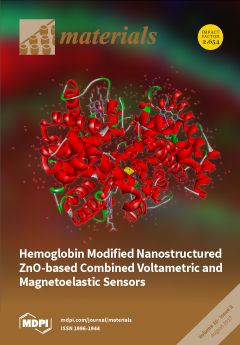1
Department of Basic Sciences & Oral Biology, Faculty of Dentistry, Universiti Sains Islam Malaysia, Level 15, Tower B, Persiaran MPAJ, Jalan Pandan Utama, Kuala Lumpur 55100, Malaysia;
2
Department of Life Sciences, Cattinara University Hospital, Trieste University, Strada di Fiume 447, I-34149 Trieste, Italy
3
Institute of Oncology Ljubljana, Zaloska 2, SI-1000 Ljubljana, Slovenia
4
Department of Engineering and Architecture, University of Trieste, Via Valerio 6/A, I-34127 Trieste, Italy
5
Center for Translational Medicine, International Clinical Research Center, St. Anne’s University Hospital, Pekarska 53, 656 91 Brno, Czech Republic
6
Surgery and Health Sciences, Department of Medical, Cattinara Hospital, University of Trieste, I-34127 Trieste, Italy
7
Department of Clinico-Surgical Sciences, Experimental Surgery Laboratory, University of Pavia and IRCCS S, Matteo Hospital Pavia, 27100 Pavia, Italy
Abstract
Because of its high biocompatibility, bio-degradability, low-cost and easy availability, cellulose finds application in disparate areas of research. Here we focus our attention on the most recent and attractive potential applications of cellulose in the biomedical field. We first describe the chemical/structural composition
[...] Read more.
Because of its high biocompatibility, bio-degradability, low-cost and easy availability, cellulose finds application in disparate areas of research. Here we focus our attention on the most recent and attractive potential applications of cellulose in the biomedical field. We first describe the chemical/structural composition of cellulose fibers, the cellulose sources/features and cellulose chemical modifications employed to improve its properties. We then move to the description of cellulose potential applications in biomedicine. In this field, cellulose is most considered in recent research in the form of nano-sized particle, i.e., nanofiber cellulose (NFC) or cellulose nanocrystal (CNC). NFC is obtained from cellulose via chemical and mechanical methods. CNC can be obtained from macroscopic or microscopic forms of cellulose following strong acid hydrolysis. NFC and CNC are used for several reasons including the mechanical properties, the extended surface area and the low toxicity. Here we present some potential applications of nano-sized cellulose in the fields of wound healing, bone-cartilage regeneration, dental application and different human diseases including cancer. To witness the close proximity of nano-sized cellulose to the practical biomedical use, examples of recent clinical trials are also reported. Altogether, the described examples strongly support the enormous application potential of nano-sized cellulose in the biomedical field.
Full article






